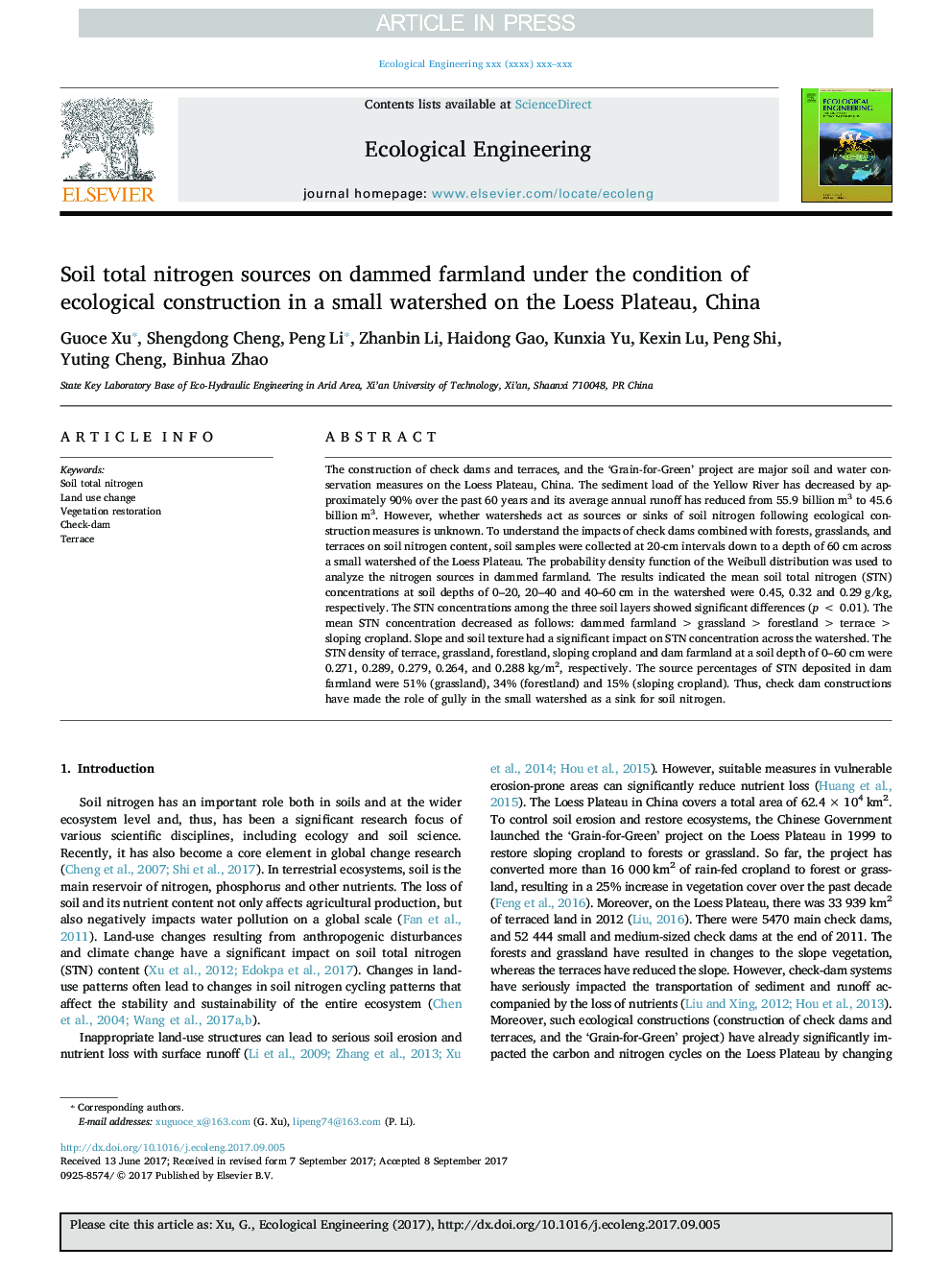| Article ID | Journal | Published Year | Pages | File Type |
|---|---|---|---|---|
| 10223350 | Ecological Engineering | 2018 | 7 Pages |
Abstract
The construction of check dams and terraces, and the 'Grain-for-Green' project are major soil and water conservation measures on the Loess Plateau, China. The sediment load of the Yellow River has decreased by approximately 90% over the past 60 years and its average annual runoff has reduced from 55.9 billion m3 to 45.6 billion m3. However, whether watersheds act as sources or sinks of soil nitrogen following ecological construction measures is unknown. To understand the impacts of check dams combined with forests, grasslands, and terraces on soil nitrogen content, soil samples were collected at 20-cm intervals down to a depth of 60 cm across a small watershed of the Loess Plateau. The probability density function of the Weibull distribution was used to analyze the nitrogen sources in dammed farmland. The results indicated the mean soil total nitrogen (STN) concentrations at soil depths of 0-20, 20-40 and 40-60 cm in the watershed were 0.45, 0.32 and 0.29 g/kg, respectively. The STN concentrations among the three soil layers showed significant differences (p < 0.01). The mean STN concentration decreased as follows: dammed farmland > grassland > forestland > terrace > sloping cropland. Slope and soil texture had a significant impact on STN concentration across the watershed. The STN density of terrace, grassland, forestland, sloping cropland and dam farmland at a soil depth of 0-60 cm were 0.271, 0.289, 0.279, 0.264, and 0.288 kg/m2, respectively. The source percentages of STN deposited in dam farmland were 51% (grassland), 34% (forestland) and 15% (sloping cropland). Thus, check dam constructions have made the role of gully in the small watershed as a sink for soil nitrogen.
Related Topics
Life Sciences
Agricultural and Biological Sciences
Ecology, Evolution, Behavior and Systematics
Authors
Guoce Xu, Shengdong Cheng, Peng Li, Zhanbin Li, Haidong Gao, Kunxia Yu, Kexin Lu, Peng Shi, Yuting Cheng, Binhua Zhao,
